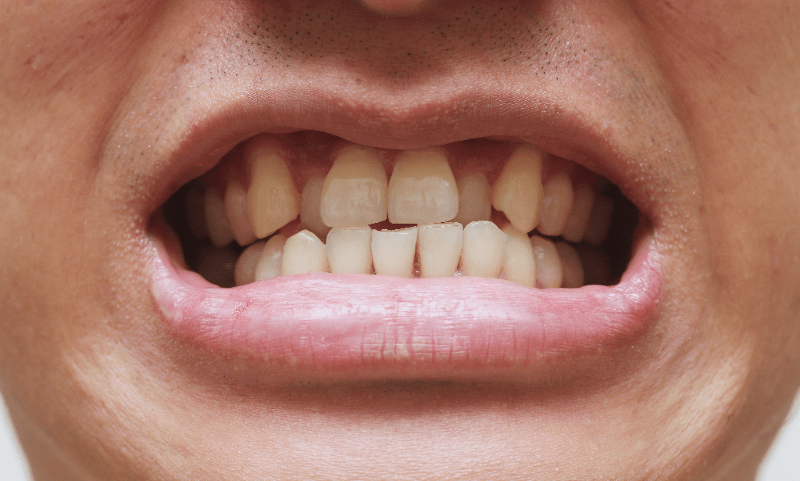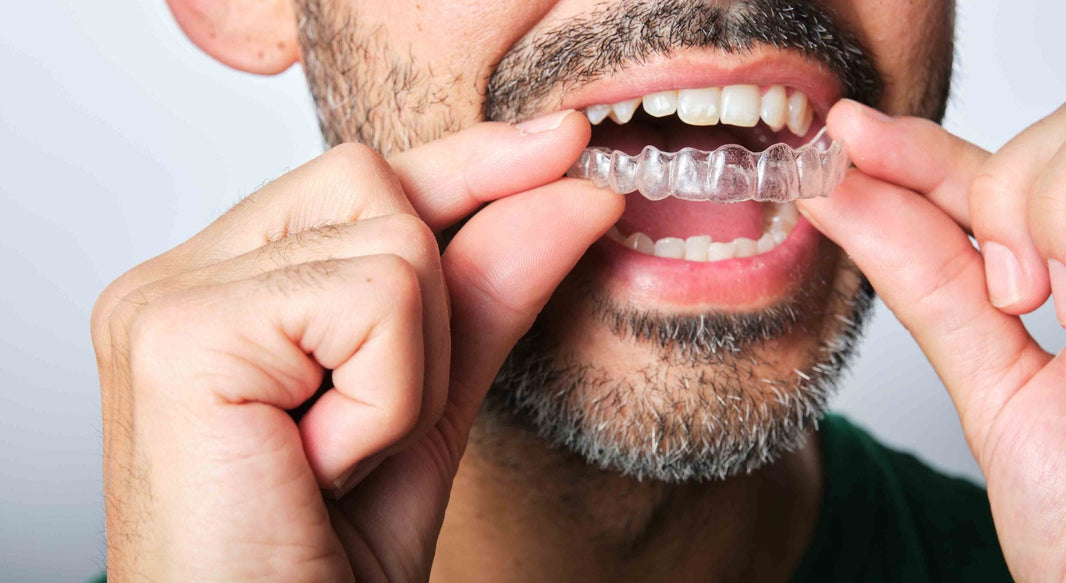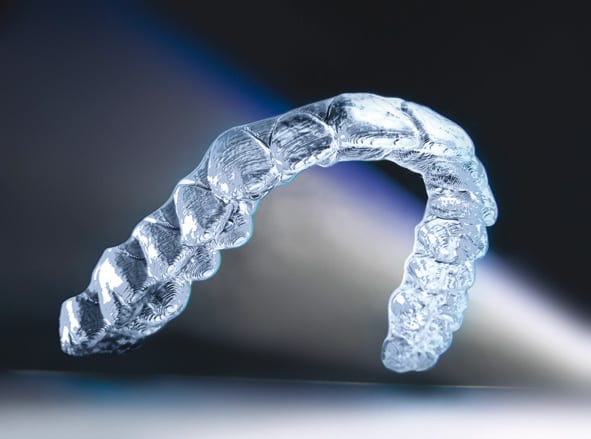A crossbite may sound like a minor dental issue, but it can significantly affect your oral health and overall well-being. If you've ever noticed misaligned teeth or experienced difficulty when biting down, you might be dealing with this common condition.
Understanding crossbite is important not only for achieving a beautiful smile but also for preventing potential complications down the road. In this comprehensive guide, we'll explore the key symptoms that could indicate a crossbite, the diagnostic process to identify it, and, most importantly, the effective treatment options available.
Types of Crossbites
What is a Crossbite?
A crossbite is a dental misalignment where the upper teeth fall inside the lower teeth when the jaws are closed. Unlike an overbite, which involves vertical overlap, or an underbite, which projects the lower jaw forward, a crossbite involves lateral deviation — essentially, the teeth don’t line up properly from side to side. It can affect a single tooth or multiple teeth and may be present in the front of the mouth (anterior crossbite) or the back (posterior crossbite).
From a clinical perspective, a crossbite reflects a mismatch between the width of the upper and lower jaws. In healthy occlusion, the upper teeth should slightly overlap the lower teeth all the way around the arch.
The American Association of Orthodontists estimates that 20-30% of orthodontic patients present with some form of crossbite. Crossbites are not just cosmetic concerns — they’re classified as functional malocclusions. This means they can actively impair chewing, speaking, and even breathing patterns over time. That’s why orthodontic intervention is often recommended even in seemingly minor cases.
Types of Crossbites
Anterior Crossbite
An anterior crossbite occurs when one or more of the upper front teeth sit behind the lower front teeth when biting down. This is often mistaken for an underbite but differs because only select teeth are involved, not the entire jaw.
Anterior crossbites can be purely dental (caused by misaligned teeth) or skeletal (caused by an underdeveloped maxilla or an overgrown mandible). If left untreated, they can cause excessive wear on the front teeth , affect speech articulation, and contribute to jaw compensation patterns.

Posterior Crossbite
Posterior crossbites involve the back teeth , where the upper molars and premolars bite inside the lower ones. This often results in a patient shifting their jaw to one side when closing their mouth to achieve a more comfortable bite.
This compensatory movement can, over time, lead to facial asymmetry and long-term TMJ dysfunction. Posterior crossbites are particularly common in children and may stem from narrow palatal arches , thumb sucking, or prolonged pacifier use.

Single-tooth Crossbite
A single-tooth crossbite is a localized misalignment where one tooth — often a front incisor — erupts or shifts into an abnormal position, typically behind the opposing tooth rather than slightly in front as in a normal bite.
Though it involves only one tooth, the impact can extend beyond aesthetics: uneven enamel wear, gum irritation, and even jaw discomfort may develop over time.

Bilateral Crossbite
A bilateral crossbite occurs when the upper teeth on both sides of the mouth bite inside the lower teeth, typically due to a narrow upper jaw , a wide lower jaw , or a combination of both skeletal discrepancies.
This condition can involve the front (anterior) teeth, the back (posterior) teeth, or span the entire dental arch. Because both sides of the mouth are affected, bilateral crossbites are more likely to produce symmetrical but functionally compromised jaw growth , making early diagnosis and intervention critical for long-term stability.

Unilateral Crossbite
A unilateral crossbite is a type of malocclusion where the teeth on only one side of the mouth are misaligned, causing the upper teeth to bite inside the lower teeth (or the reverse) when the jaw closes.
Unlike bilateral crossbites, which affect both sides symmetrically, unilateral cases often trigger a functional shift in the jaw — meaning the lower jaw may deviate to one side during closure to compensate. This can lead to asymmetrical jaw growth, facial imbalance, TMJ strain, and uneven wear on the affected side.

What Causes a Crossbite?
Genetic Predisposition
Like many dental and skeletal issues, crossbites often run in families. If one or both parents have had a history of malocclusion, particularly narrow upper arches or prominent lower jaws, there’s a heightened risk their children may develop a crossbite.
In these cases, the underlying bone structure (rather than the alignment of individual teeth) is to blame.
Jaw Misalignment
If the upper jaw fails to grow proportionally, or if the lower jaw grows too much, functional crossbite can result. This is often seen during puberty, when growth spurts can make pre-existing skeletal discrepancies more pronounced.
Prolonged Childhood Habits
Oral habits during developmental years can reshape jaw growth and encourage improper tooth eruption.
Delayed or Premature Tooth Eruption
Timing matters. If baby teeth fall out too early , adjacent teeth may drift into the space, causing misalignment for incoming adult teeth. Conversely, if baby teeth overstay their welcome , they can block the proper eruption path of adult teeth, leading to a crossbite.
Cleft Palate and Craniofacial Abnormalities
Children born with cleft palate or syndromic conditions like Crouzon syndrome or Pierre Robin sequence often develop severe skeletal crossbites due to disrupted jaw development.
Crossbite Treatments
Treatment for a crossbite isn’t one-size-fits-all. It depends on the type (anterior vs. posterior), cause (dental vs. skeletal), severity, and the patient’s age. Early intervention often leads to simpler, more stable results, especially in children whose bones are still developing. For adults, treatment may involve more complex biomechanical or surgical strategies — but excellent outcomes are still achievable with the right plan.
Braces
Traditional braces remain the gold standard for correcting most dental crossbites, particularly in adolescents and adults. They apply controlled, gradual force to realign teeth into the correct position. Recent advancements like self-ligating braces and 3D digital treatment planning have improved comfort and predictability.
Invisalign
Clear aligners are now FDA-cleared for many forms of crossbite correction — particularly mild to moderate dental crossbites .
Palatal Expanders
Used primarily in children and pre-teens, palatal expanders correct skeletal crossbites by widening the upper jaw before the growth plates fuse. Expanders can also improve nasal airflow and airway volume , making them beneficial for children with sleep-disordered breathing.
Orthognathic Jaw Surgery
When crossbite is caused by significant skeletal discrepancies — such as an overly wide lower jaw or severely narrow upper jaw — orthognathic surgery may be the only effective option.
Conclusion
A crossbite may seem like a minor misalignment on the surface, but beneath that asymmetry lies a deeper interplay of bone structure, bite dynamics, and long-term oral health. Whether caused by skeletal imbalances, dental crowding, or developmental habits, crossbites rarely resolve on their own — and when ignored, they tend to invite a host of complications ranging from enamel erosion to jaw dysfunction.
Fortunately, modern orthodontics offers more tools than ever to correct crossbites at any age. From palatal expanders in growing children to aligner systems and surgical options for adults, treatment is no longer a one-path process but a personalized strategy. The key is early detection, clinical accuracy, and a tailored plan based on your anatomy and goals.
If you suspect a crossbite — in yourself or your child — don’t wait for discomfort to dictate your timeline. A consult with an experienced orthodontist can clarify your options, prevent future complications, and pave the way for a healthier, more functional smile. After all, alignment isn't just about aesthetics — it's about balance, stability, and confidence that lasts.
Is a posterior crossbite more serious than an anterior one?
Both can lead to complications if untreated. Posterior crossbites often cause jaw shifts and facial asymmetry, while anterior crossbites may damage front teeth.
Can Invisalign treat all types of crossbite?
Invisalign can correct many dental crossbites, especially anterior and mild posterior types, but severe skeletal crossbites may require braces or jaw expansion.





